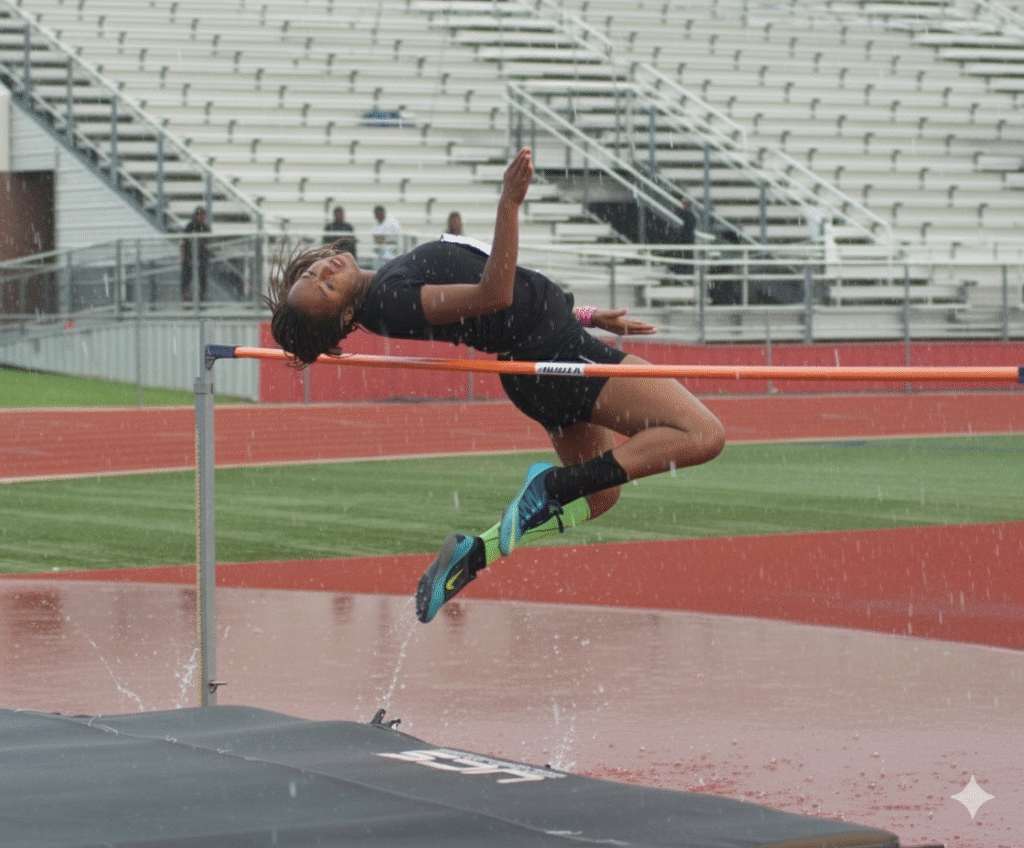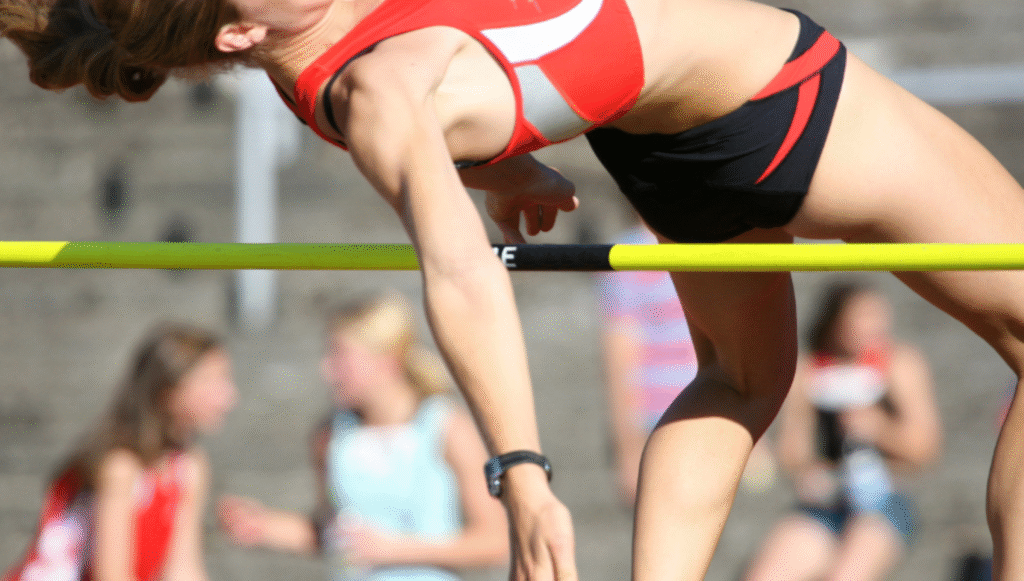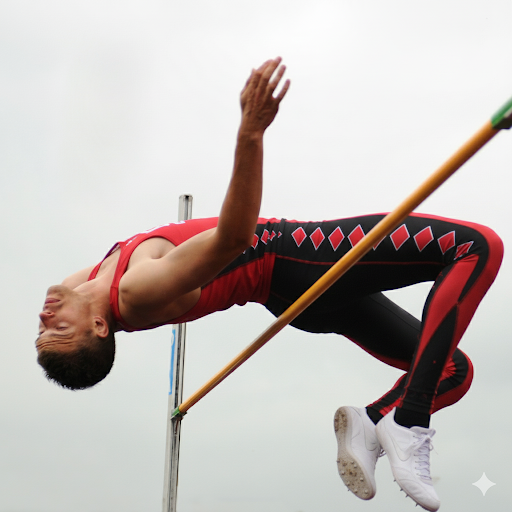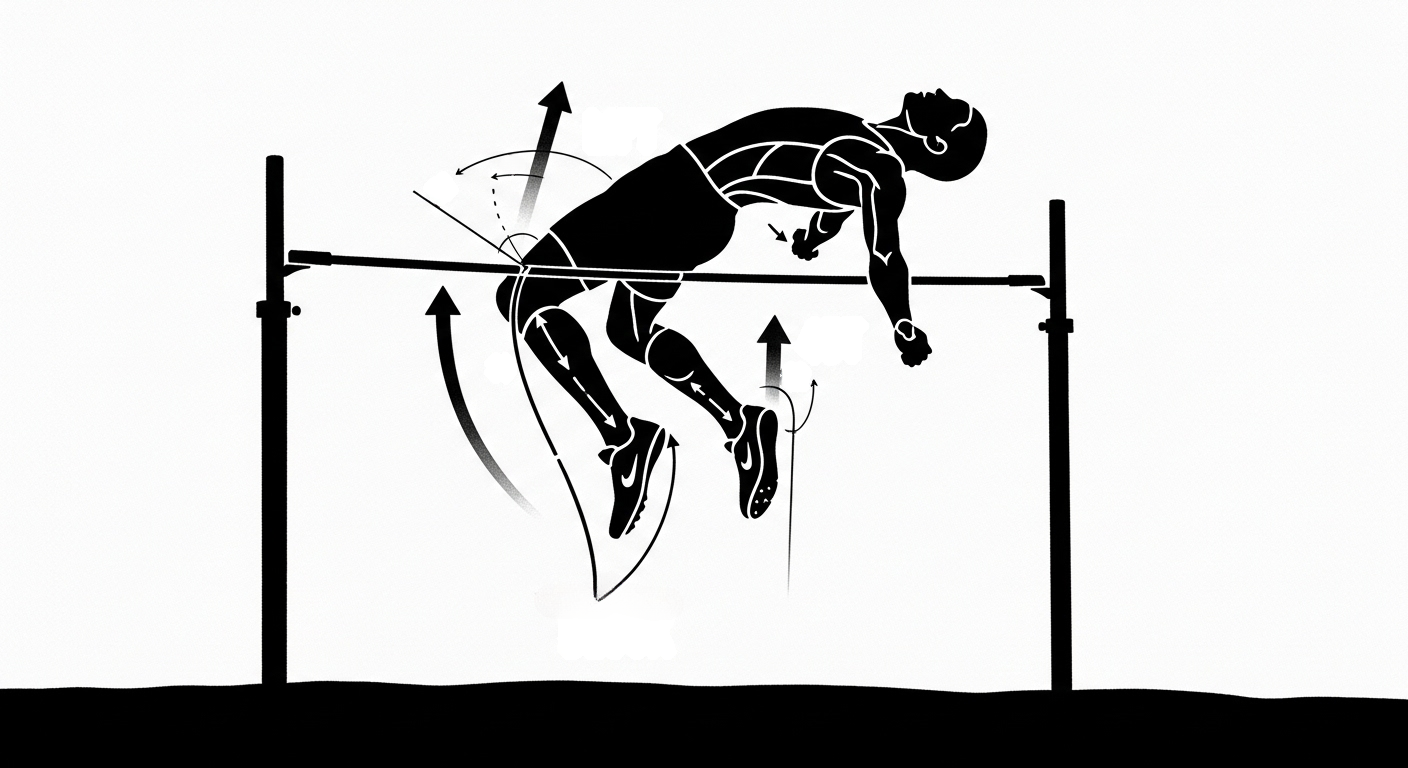High jump athletes often face unpredictable and challenging weather conditions that can significantly impact their performance. From gusty winds to extreme temperatures, adapting techniques and strategies is crucial for maintaining peak performance. This article explores expert strategies for adjusting high jump technique, optimizing body positioning, and preparing mentally to excel in diverse environmental scenarios. Whether competing in calm or adverse conditions, these insights will help athletes navigate and overcome weather-related challenges.
The high jump is a technical event that demands precision, timing, and consistency. When environmental factors introduce variables, even the most skilled athletes can struggle to maintain their standard performance levels. Understanding how to adjust high jump technique for wind and temperature variations isn’t just helpful—it’s essential for competitive success.
Elite high jumpers don’t just practice in ideal conditions; they deliberately train to adapt to various weather scenarios. This adaptability becomes a competitive advantage, allowing them to perform consistently regardless of external circumstances. Throughout this article, we’ll explore practical strategies that both novice and experienced jumpers can implement to enhance their performance across different weather conditions.
Adjusting Technique for Wind Conditions
Wind is perhaps the most challenging weather variable for high jumpers, as it can drastically affect approach speed, takeoff timing, and in-air stability. Learning to read and respond to wind conditions can transform this potential obstacle into a performance advantage.
When facing headwinds during your approach, adjusting your technique becomes crucial for maintaining jump quality. Headwinds create additional resistance, effectively slowing your approach and potentially reducing the power generated for your jump. To compensate, consider starting your approach with slightly greater intensity and speed than usual. This adjustment helps maintain your optimal approach velocity despite the wind resistance.
Conversely, tailwinds present a different challenge by potentially accelerating your approach beyond your control. When running with the wind at your back, begin with a more measured pace and focus on maintaining technical precision rather than raw speed. Many elite jumpers will shorten their approach by 1-2 steps in tailwind conditions, allowing for better control over their velocity.
Crosswinding scenarios require perhaps the most nuanced adjustments. When wind blows across your approach path, it can affect your balance and trajectory. Expert jumpers often position themselves slightly upwind at the start of their approach to account for the gradual drift that crosswinds can cause. This subtle positioning adjustment helps maintain a straight approach line and proper alignment at takeoff.
The angle of your takeoff becomes particularly important in windy conditions. In headwinds, a slightly steeper takeoff angle can help you cut through the resistance and maintain jump height. With tailwinds, a slightly flatter takeoff angle helps control excess forward momentum and prevents overshooting the landing area.
Perhaps most interesting is the ability of experienced jumpers to use wind direction to enhance jump trajectory. Some elite athletes deliberately schedule their jumps during favorable wind conditions, timing their attempts when wind patterns might provide a slight lifting effect during the critical flight phase. This strategic approach requires keen environmental awareness and the patience to wait for optimal conditions when competition rules allow.
Practical drills for wind adaptation include practicing approaches at varying speeds, performing takeoffs under controlled wind conditions (using fans in training facilities), and developing an intuitive feel for how your body responds to different wind scenarios. These deliberate practice strategies build the adaptability needed to perform consistently regardless of wind conditions.
- Modify approach speed to compensate for wind resistance.
- Alter the angle of takeoff to maintain balance.
- Use wind direction to enhance jump trajectory when possible

Managing Temperature Variations
Temperature variations significantly impact muscle performance, flexibility, and energy systems—all critical factors in high jump success. Adapting to both hot and cold conditions requires specific strategies to maintain optimal physical function.
In cold weather conditions, muscle elasticity decreases, joint fluid becomes more viscous, and reaction times can slow—all detrimental to high jump performance where explosive power and precise timing are essential. Implementing a thorough progressive warm-up routine becomes even more critical in these conditions. Expert jumpers often extend their warm-up by 15-20 minutes in cold weather, incorporating dynamic stretching and gradually increasing movement intensity.
Practical cold-weather strategies include layering clothing during warm-ups and gradually removing layers as body temperature increases. Many elite jumpers use heated massage tools or thermal compression garments to maintain muscle temperature between jumps. Some even keep hot packs or heated towels in their competition bags to apply to key muscle groups like the calves and quadriceps between attempts.
Hot weather presents the opposite challenge—preventing overheating and dehydration that can impair coordination and sap energy. Proper hydration should begin 24-48 hours before competition in hot conditions, not just during the event itself. Electrolyte-balanced fluids are preferable to plain water, especially during prolonged competitions where electrolyte depletion can affect muscle function.
Cooling strategies like ice towels applied to the neck and wrists between jumps can help maintain optimal core temperature. Some athletes use cooling vests during warm-up phases and between attempts. Finding shade between jumps and using lightweight, moisture-wicking attire helps manage body temperature effectively.
Attire selection requires particular attention across temperature variations. In cold conditions, compression layers that retain heat while allowing full range of motion are ideal. Many jumpers wear arm sleeves or leg warmers that can be easily removed just before jumping. In hot conditions, lightweight, breathable fabrics that maximize evaporative cooling effect are preferred.
Interestingly, research suggests that high jumpers may need to adjust their approach timing in different temperature conditions. Cold weather often requires slightly longer ground contact times during the approach, while hot weather might enable more explosive takeoffs due to increased muscle elasticity. Understanding these subtle differences allows for technique refinements specific to the environmental conditions.
Regardless of temperature, consistent temperature monitoring and body awareness are essential skills. Learning to recognize how your unique physiology responds to temperature variations allows for personalized adaptations that maintain performance consistency regardless of the thermometer reading.
- Implement appropriate warm-up routines for cold weather to prevent injuries.
- Stay hydrated and use cooling strategies during hot conditions.
- Choose suitable attire that balances comfort and performance.

Optimizing Body Positioning and Alignment
Weather conditions often necessitate subtle but critical adjustments to body positioning and alignment during high jumps. These refinements help maintain technique consistency despite environmental challenges, ensuring efficient energy transfer from approach to clearance.
Maintaining a stable center of gravity becomes particularly crucial in variable weather conditions. Wind gusts can disrupt balance during the approach and takeoff phases, potentially compromising jump quality. Elite jumpers develop a lower center of gravity during windy approaches by slightly lowering their posture, creating greater stability without sacrificing speed. This adjustment requires conscious body awareness and regular practice in various wind conditions.
The positioning of the takeoff foot also warrants attention in changing weather scenarios. In wet or humid conditions where track surfaces may offer less traction, placing the takeoff foot slightly flatter (with less heel-to-toe rolling action) can increase surface contact and improve stability. Conversely, on exceptionally dry or hot surfaces where track materials might become stickier, a more dynamic rolling action through the takeoff foot can prevent unnecessary deceleration.
Hand and arm positioning significantly influences rotation and balance during the jump. In crosswind conditions, subtle adjustments to arm swing can counterbalance wind effects. Some coaches recommend a slightly asymmetric arm action when jumping in crosswinds—with the upwind arm generating slightly more force to counteract lateral drift. This technique requires significant practice but can substantially improve consistency in windy conditions.
The bar approach angle might also require adjustment based on weather conditions. Standard approaches typically range from 30-45 degrees to the bar, but some athletes find that increasing this angle slightly in headwind conditions or decreasing it in tailwind conditions helps maintain optimal takeoff positioning. These adjustments ensure that the athlete reaches the bar at the apex of their jump regardless of wind influence on their flight path.
Trunk positioning during the flight phase also demands weather-specific adjustments. In gusty conditions, maintaining a more compact position with less arching can reduce the body’s surface area exposed to wind, minimizing unwanted movement during the critical bar clearance phase. This technique requires enhanced core strength and body control but can significantly improve clearance consistency in variable conditions.
Practical drills for developing weather-adaptive body positioning include single-leg stability exercises on unstable surfaces, core training with unexpected perturbations, and technique practice in deliberately challenging environmental conditions. Many elite training programs incorporate wind simulation (using fans) and varied surface conditions to develop these adaptability skills systematically.
Coach feedback and video analysis become particularly valuable tools when refining body positioning for weather adaptation. Subtle adjustments that might feel insignificant to the athlete often appear more pronounced on video, allowing for more precise technique refinement. Regular video review comparing jumps in different weather conditions helps identify personal patterns and optimal adjustment strategies.
- Maintain a stable center of gravity despite environmental changes.
- Adjust grip and hand placement based on weather conditions.
- Focus on smooth, controlled movements to enhance jump efficiency.

Adapting to weather conditions is essential for high jump athletes striving to achieve consistent performance.
By adjusting techniques for wind and temperature variations, optimizing body positioning, and enhancing mental resilience, athletes can effectively navigate and overcome environmental challenges. Implementing these expert strategies will not only improve performance but also build the versatility and confidence needed to excel in any weather.
The most successful high jumpers don’t view weather as an excuse for subpar performance but rather as an opportunity to demonstrate their versatility and preparation. They understand that weather adaptation in high jump technique isn’t just about physical adjustments—it’s a comprehensive approach integrating technical modifications, physiological management, and psychological resilience.
As you incorporate these strategies into your training regimen, focus on progressive adaptation rather than immediate mastery. Begin by identifying the weather conditions that most significantly impact your performance, then systematically address each through targeted practice and refinement. Record your experiences in different conditions, noting which adaptations proved most effective for your unique jumping style.
Remember that weather adaptation ultimately provides a competitive advantage. While less-prepared jumpers may struggle in challenging conditions, those who have systematically developed their adaptability will maintain performance consistency regardless of environmental variables. This reliability not only improves competition outcomes but also builds confidence that further enhances performance across all conditions.
Embrace weather challenges as growth opportunities rather than obstacles. Each training session in variable conditions builds your capacity to perform when it matters most. With consistent application of the strategies outlined in this article, you’ll develop the adaptability needed to clear new heights regardless of what nature throws your way.
The bar awaits your clearance—in sunshine, wind, heat, or cold. How will you adapt to rise above?

